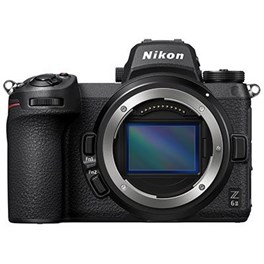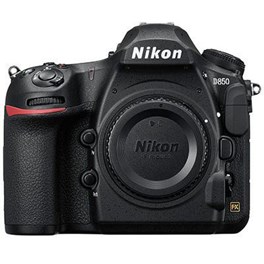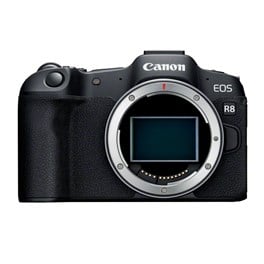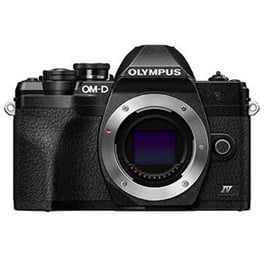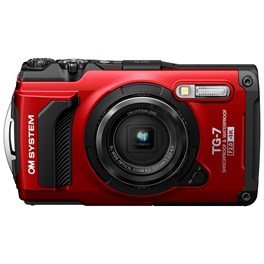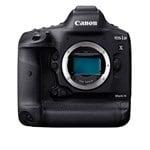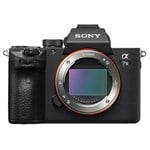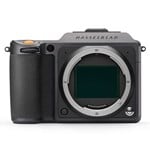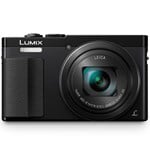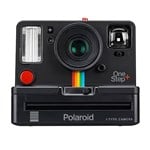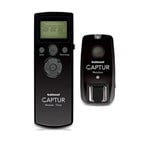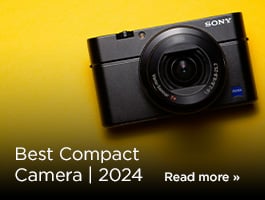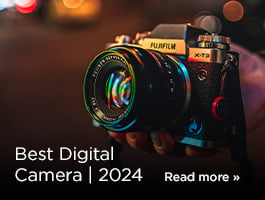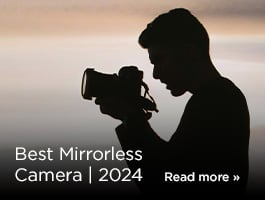
With the best camera for macro photography, you can capture astoundingly detailed imagery of the tiniest subjects. Any half-decent interchangeable-lens camera can be a macro camera — the real trick is getting the right lens, so when making our picks, we’ve looked at the lens ranges of each of these cameras, as well as their own capabilities.
Our team have spent plenty of time with all of these cameras, and we’re only recommending models that we feel confident provide macro shooters with real value. We’ve looked at beginner and budget-friendly options as well as more sophisticated cameras for expert photographers, and have weighed up value for money when making our picks. As such, there’s a mix of older and newer cameras in this guide — the one thing they all have in common is that they can capture spectacular macro images.
For more on macro and close-up shooting, see our dedicated guide to macro photography, and we also have a guide to the best macro photography lenses to pair with your camera. Otherwise, read on for the best cameras to buy for macro photography.
Best mirrorless camera for macro:
|
Sensor: 24.5MP full-frame BSI CMOS Video: 4K UHD at 60p Autofocus: 273-point hybrid AF with Eye-Detection Stabilisation: In-body 5-axis Burst Rate: Up to 14 fps |
Pros:
Cons:
|
If you’re going to shoot macro, the Nikon Z series is an excellent place to start. You have access to some absolutely sublime macro lenses, particularly the Nikon Z MC 105mm f2.8 VR S, which delivers absolutely faultless image quality even for extreme close-up work. As for the Z6 II itself, it’s an exemplary camera, delivering superb full-frame images in a range of shooting situations. With dual card slots and the ability to hot-charge via USB-C while continuing to shoot, it’s a camera that’ll cope with a hard day’s work.
The body of the camera is durably built for working outside, with weatherproofing. There’s also a beautifully large and sharp viewfinder to use for composition, in addition to the tilting LCD screen. It’s difficult to imagine any macro shooter not finding the Z6 II meeting all of their needs and then some.
Nikon has since released an updated version of this all-rounder camera, the Nikon Z6 III. However, the main improvements made to this newer model are to do with speed, thanks to its “partially stacked” sensor design. It’s got faster focusing and a faster burst rate, which is great for sports photography but less useful for macro. Given that the top-line resolution is still 24.5MP, we’re sticking with the more affordable Z6 II as our recommendation for macro photographers.
Best APS-C camera for macro:
|
Sensor: 40.2MP APS-C X-Trans CMOS 5 HR Video: 6.2K at 30p, 4:2:2 10-bit Autofocus: Deep-learning subject detection AF Stabilisation: 5-axis IBIS up to 7 stops Screen: 3-way tilting LCD |
Pros:
Cons:
|
Fujifilm’s X-T5 is a stills-first camera, a magnificent APS-C shooter for enthusiasts, and one that produces punchy, dynamic images. It’s perfect for macro photography – in part because of its weatherproof build and tactile manual controls, but also because of the superb X-mount lens selection. Macro shooters have their pick of some incredible lenses in this system – the star of the show is the Fujifilm XF 80mm f2.8 LM OIS WR Macro, a stunning telephoto with incredible close-up capabilities and beautiful bokeh. However, there’s also the more budget-friendly XF 60mm f2.4 R Macro and XF 30mm f2.8 R LM WR Macro to choose from.
Fujifilm cameras have a reputation for spectacular JPEG quality that can soften the hearts of even the most die-hard RAW enthusiast. With 40MP of resolution to play with, the X-T5 is terrific for making big prints of your macro images.
Best DSLR for macro:
|
Sensor: 45.7MP full-frame BSI CMOS Video: 4K UHD at 30p (full sensor width) Autofocus: 153-point phase-detection AF Viewfinder: Optical with 0.75x magnification Burst Rate: Up to 7 fps (9 fps with grip) |
Pros:
Cons:
|
The spectacular Nikon D850 is a much-loved DSLR, particularly among wildlife photographers, and it has many features that make it a superb option for macro work. Its 45.7MP back-illuminated, full-frame CMOS sensor produces spectacular, dynamic images that print brilliantly, and its weatherproof body is built like a tank – perfect for a day’s outdoor shooting. The battery life is also excellent, rated to 1,840 images per charge, and the shutter is rated to at least 200,000 actuations. The D850 is a robust camera that simply shoots and shoots, and you’ll get many years’ happy macro photography out of it.
Lens-wise, the Nikon F-mount is generously stocked with macro options. Remember that you can often save some cash by looking beyond your camera manufacturer to third-party lens makers – the Sigma 105mm f2.8 Macro EX DG OS HSM is an excellent lens for close-ups that’s also highly affordable.
Best mid-range camera for macro:
|
Sensor: 24.2MP full-frame CMOS Video: 4K 60p oversampled from 6K Autofocus: Dual Pixel CMOS AF II with subject tracking Stabilisation: Digital IS (no IBIS) Weight: Approx. 461g (incl. battery and card) |
Pros:
Cons:
|
The huge Canon lens ranges in the EF and RF mounts, consisting both of Canon-made macro optics and high-quality lenses from third-party manufacturers like Sigma, mean that a Canon camera is a highly competitive option for macro photography. The full-frame EOS R8 sits firmly in the middle of the range, and gives you fantastic lenses to choose from like the RF 100mm f2.8 L Macro IS USM, which boasts its own Spherical Aberration control ring that allows you to fine-tune the shape and texture of bokeh in your images.
Alternatively, pick up an EF-EOS R mount adapter and you’ve got a world of budget-friendly DSLR macro lenses to explore, such as the Sigma 105mm f2.8 Macro EX DG OS HSM for Canon EF, which when adapted to the EOS R8, will work with full functionality of autofocus. The camera itself produces vivid, punchy images from its 24.2MP sensor, and is also ruggedly built, with weather-resistant frame that means it can keep on shooting in tough conditions.
Best beginner camera for macro:
|
Sensor: 20.3MP Micro Four Thirds Video: 4K UHD at 30p Autofocus: 121-point contrast-detect AF Stabilisation: 5-axis in-body Screen: Flip-down touchscreen |
Pros:
Cons:
|
Micro Four Thirds is a great system to consider if you’re looking to build a macro photography setup without spending too much, and the Olympus OM-D E-M10 Mark IV is an ideal starting point. A beginner-friendly mirrorless camera, this lightweight shooter produces brilliant images and offers lots of helpful features like 5-axis in-body stabilisation.
Lens-wise, you have lots to pick from. Affordable lenses like the Olympus M.Zuiko Digital ED 30mm f3.5 Macro are a good starting point. Remember that the smaller sensor means a 2x crop factor, so the effective focal length of the lens is double the stated focal length. For a more premium option, there’s also the spectacular OM SYSTEM M.Zuiko Digital ED 90mm f3.5 Macro IS PRO. And remember that you can use Panasonic Micro Four Thirds lenses interchangeably on this camera, so optics like the Panasonic 45mm f2.8 Macro Leica D Vario-Elmar are also in play.
Best budget camera for macro:
|
Sensor: 12MP 1/2.3-inch BSI CMOS Lens: 25-100mm f2.0–4.9 equivalent Video: 4K UHD at 30p Durability: Waterproof to 15m, shockproof to 2.1m Extras: GPS, compass, thermometer, manometer |
Pros:
Cons:
|
We would normally think twice about recommending a compact camera for macro photography, as generally it’s best if you have the flexibility to attach a dedicated macro lens. However, the OM System Tough TG-7 makes for a great budget option for macro shooters for a number of reasons – not just the price. For one, it’s a tough compact, meaning it’s waterproof, shockproof, freezeproof and crushproof. If you’re looking for an adventure-ready camera, you can hardly ask for better.
For two, the TG-7 boasts a number of dedicated macro modes designed to facilitate close-up shooting. As well as the standard Microscope mode, there’s also the option to try your hand at Focus Stacking, and even macro modes that are specifically designed to work underwater. That’s something no other camera on this list can offer — at least, not without an expensive housing. This makes the OM System Tough TG-7 a unique proposition among macro cameras, and one that’s well worth snapping up.

How to choose a camera for macro photography
There are a few essential features to consider when choosing a camera for macro work – whether you’re shooting insects, flowers or fine product details.
Sensor size – While macro photography is more about close focusing than megapixels, sensor size still plays a crucial role. Larger sensors (like APS-C or full-frame) generally offer better image quality, low-light performance and depth-of-field control. However, smaller sensors (like Micro Four Thirds) give you more apparent magnification and deeper depth of field, which can be useful when working close to your subject.
Lens compatibility – A macro lens is essential for true close-up work. Make sure your chosen camera system has dedicated macro lenses available, ideally offering 1:1 magnification (life-size reproduction). Interchangeable-lens cameras offer the greatest flexibility, but there are fixed-lens compact cameras with built-in macro modes which can still be effective for beginners.
Autofocus and manual control – Precision is everything in macro photography. Look for a camera with accurate and responsive autofocus, ideally with focus peaking for manual adjustments. Focus bracketing – where the camera takes a series of images with slightly different focus points – is also a valuable feature for creating stacked, sharp images from front to back.
Stabilisation – Whether in the body (IBIS) or lens (optical), image stabilisation can make a big difference, especially when shooting handheld or in natural light. Macro work often involves tiny movements that can throw off focus or introduce blur, so this is a real benefit.
Durability and handling – Shooting macro often involves getting low to the ground or into awkward spaces. A camera with a vari-angle or tilting screen can make composition easier, and weather-sealing can be a bonus if you're working outdoors. Comfort and ease of use matter too – the more natural the camera feels in your hands, the more you can focus on the shot.
FAQs
What is Macro Photography?
Macro photography is a specialised form of close-up photography that captures small subjects at a 1:1 ratio or larger, revealing intricate details not visible to the naked eye. It often involves shooting small objects like insects, flowers, or textures.
What equipment is important for Macro Photography?
Essential equipment includes a macro lens for close focusing, a sturdy tripod to reduce camera shake, and good lighting, such as a ring flash or diffused natural light. Extension tubes and lens filters can also enhance macro capabilities.
What is the ideal lighting setup for Macro Photography?
The ideal lighting setup often involves diffused natural light or external sources like ring flashes or LED lights. Diffusers and reflectors can help control harsh shadows and highlights, providing even illumination.
How should you manage shallow depth of field in Macro Photography?
Managing a shallow depth of field involves careful selection of the focus point and adjusting the aperture. Focus stacking, a technique combining multiple images with different focus points, is also effective in achieving a greater depth of field.
What are the best subjects for Macro Photography?
The best macro subjects include insects, flowers, water droplets, textures, and small objects with intricate details. Experiment with various subjects to discover unique perspectives and details that may not be immediately apparent.
How can I get started with Macro Photography on a budget?
Start with affordable options like extension tubes or close-up filters to convert a standard lens into a makeshift macro lens. Utilise natural light and DIY diffusers. As you progress, consider investing in a dedicated macro lens and additional accessories.
How do we decide?
Our in-house photography experts, store staff and partners all work collaboratively to pour over our guides and tips articles. We also consider emerging trends and customer feedback to make sure our guides are always up-to-date and reflective of what people are truly looking for. By curating only the best products, our guides provide trustworthy recommendations, making it easier for customers to make informed choices with confidence.
If you would like more advice on any purchase our contact centre staff are here to help. Alternatively, you can reach us via email or social media. And don't forget. If you were to purchase anything based on our recommendations you'll be covered by our full returns policy
Sign up for our newsletter today!
- Subscribe for exclusive discounts and special offers
- Receive our monthly content roundups
- Get the latest news and know-how from our experts

